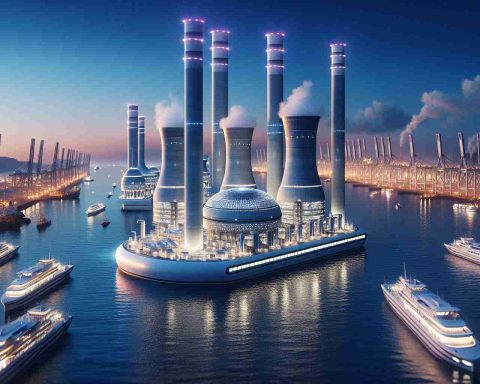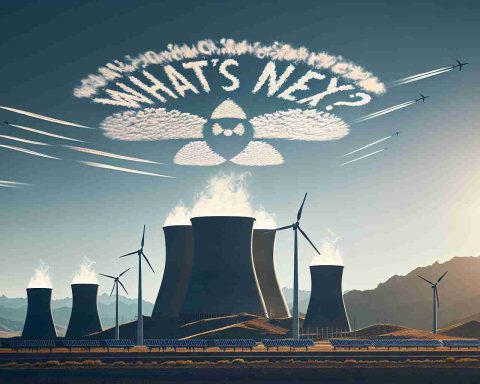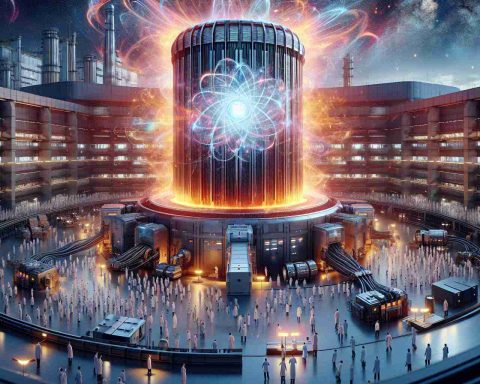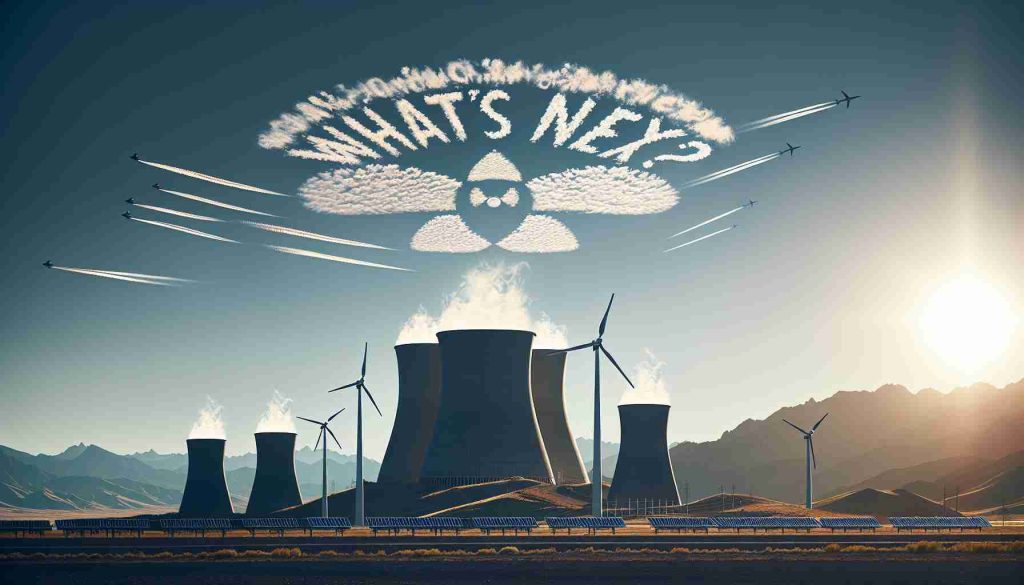- CORE POWER is pioneering Floating Nuclear Power Plants (FNPPs) to provide sustainable energy for U.S. shipping ports.
- Each FNPP can generate approximately 175 GWh of electricity annually, supporting various port operations.
- These plants will have a zero-emissions footprint, significantly reducing environmental impact.
- Collaborating with Glosten ensures that FNPPs adhere to regulatory requirements and navigate approval processes smoothly.
- The project highlights the potential for nuclear energy to address the marine industry’s decarbonization goals effectively.
- CORE POWER’s initiative represents a significant shift toward integrating innovative energy solutions in traditional shipping operations.
Imagine bustling shipping ports harnessing the power of the sea while eliminating harmful emissions. CORE POWER, a trailblazer in nuclear propulsion, is making this vision a reality with its groundbreaking Floating Nuclear Power Plants (FNPPs). In partnership with Glosten, an architectural and marine engineering firm, CORE POWER is set to revolutionize energy for U.S. ports.
These innovative FNPPs are designed as nearshore power solutions, capable of generating an impressive 175 GWh of electricity annually. Picture a barge-based nuclear power facility, seamlessly integrated into the port’s operations—energizing everything from cranes to electric vehicles, all while boasting a zero-emissions footprint.
Glosten’s expertise will ensure that these floating powerhouses meet regulatory standards while navigating complex approval processes. With operational designs underway, the project is primed to support a non-specific port in the southern United States, showcasing how nuclear energy can venture beyond traditional land-based plants.
As the marine industry rallies for decarbonization, CORE POWER’s FNPP offers a practical and effective solution. With nuclear fission as a reliable energy source, ports can access vast energy reserves, maintaining safety and sustainability without contributing to climate change.
In a landscape demanding innovative energy solutions, CORE POWER and Glosten are leading the charge toward a cleaner, greener future. Will floating nuclear plants transform shipping ports into eco-friendly energy hubs? Only time will tell, but the future is looking bright and sustainable! Stay tuned for updates on this exciting development.
Revolutionizing Energy at Sea: The Future of Floating Nuclear Power Plants
The Innovation of Floating Nuclear Power Plants (FNPPs)
CORE POWER is pioneering a new era in energy production with its Floating Nuclear Power Plants (FNPPs), aiming to introduce a revolutionary approach to energy generation for busy shipping ports. By harnessing nuclear propulsion in a maritime context, these FNPPs promise to deliver a substantial 175 GWh of electricity annually while ensuring zero-emissions—a critical feature in the quest for sustainable energy solutions.
# Key Features of CORE POWER’s FNPPs
– Zero Emissions: The FNPPs will eliminate harmful emissions, allowing ports to operate sustainably.
– Energy Independence: With the capability to power essential port operations, FNPPs can reduce dependency on fossil fuels.
– Scalability: These floating plants can be developed to meet the growing energy demands of various ports.
– Robust Regulatory Compliance: The partnership with Glosten ensures that all safety and regulatory standards are met during the plant’s design and operation.
Pros and Cons of FNPP Technology
Pros:
– Significant reduction in carbon emissions.
– Flexible and scalable energy solutions for ports.
– Potentially lower operational costs over the long term.
Cons:
– High initial investment costs and technological challenges.
– Public perception and acceptance of nuclear energy remain contentious.
– Navigating regulatory frameworks may be a lengthy process.
Market Forecasts and Trends in Marine Energy
As the global push for decarbonization becomes increasingly urgent, the demand for innovative energy solutions like FNPPs is poised to grow. Market analysis indicates that the integration of nuclear power in the marine industry could see a substantial rise in investment by 2030, driven by both regulatory incentives and a heightened focus on sustainability.
The Future of Ports with Floating Nuclear Power
The transition to floating nuclear power plants could mark a significant shift in how shipping ports operate, allowing them to become self-sufficient energy hubs. By using this cutting-edge technology, ports can expect improvements in energy reliability and environmental impact.
Frequently Asked Questions
1. How do Floating Nuclear Power Plants differ from traditional land-based nuclear plants?
Floating Nuclear Power Plants (FNPPs) are designed specifically to operate in marine environments, providing proximity to energy demand centers such as ports. They leverage the same nuclear fission technology as traditional plants but offer enhanced flexibility and mobility, making them ideal for nearshore applications.
2. What safety measures are in place for FNPPs?
FNPPs will adhere to stringent safety regulations and standards, ensuring robust protection against potential risks. Advanced design considerations, such as containment systems and emergency response protocols, will be integral to their operation.
3. What is the anticipated impact of FNPPs on the shipping industry?
The introduction of FNPPs is expected to significantly lower the carbon footprint of shipping operations while ensuring a reliable power supply. This shift could catalyze broader adoption of sustainable practices in the industry, aligning with global environmental goals.
Conclusion
CORE POWER’s innovative approach with FNPPs presents a compelling case for the future of energy in shipping ports. By leveraging nuclear technology, we can not only meet the power demands of these bustling hubs but also contribute to a cleaner, more sustainable world.
For more insights on energy innovation, visit CORE POWER.
The source of the article is from the blog smartphonemagazine.nl
















